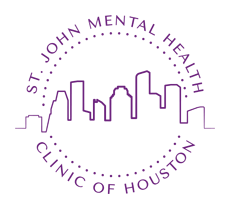IV Ketamine or Spravato® (Esketamine) for Depression?
As an individual with treatment resistant depression seeking hope and help, you may wonder what the differences are between some of the treatment options available to you. Some options sound very similar, like Ketamine and Esketamine (brand name Spravato®). These options may sound like one in the same at first glance, but do differ slightly. Ketamine and Esketamine (Spravato®) are similar in that they are both alternative treatments for those individuals with treatment resistant depression. Ketamine is an anesthetic. Esketamine is a derivative of Ketamine.
IV Ketamine
- FDA approved for use as an anesthetic only. However, there is clinical evidence that it has a positive impact on people with mental health conditions.
- Not covered by insurance plans.
Spravato® (Nasally Inhaled Esketamine)
- Spravato® has been FDA-approved for treatment of Treatment Resistant Depression since 2019.
- Covered by many insurance plans.
They both increase levels of glutamate, a chemical messenger in the brain. These neurotransmitters are stimulated and repair neural connections that address depression symptoms. They are both administered on an outpatient basis however, via different routes. One is administered intravenously and one is administered intranasally.
IV Ketamine
- Ketamine is administered intravenously by a medical professional over a series of weeks.
- Ketamine IV Therapy involves 6 administrations of ketamine via IV over a 2-3 week period.
Spravato® (Nasally Inhaled Esketamine)
- Spravato® nasal spray is self-administered under the supervision of a health care provider in a doctor’s office and the spray cannot be taken home.
- Spravato® is administered over a duration of several months:
- 2 Treatments a week for the first month
- 1 Treatment per week for the second month
- 1 Treatment every week or two weeks for subsequent months
The administration of both medications involves close monitoring by medical staff. They are used safely under supervision but some patients may experience side effects with IV Ketamine or Spravato®.
IV Ketamine
Some patients report:
- Dissociation
- Nausea
- Dizziness
- Tiredness after infusion
- Headache
- Increase in Blood Pressure or Heart Rate
Irritative and inflammatory urinary tract and bladder problems including cystitis have been reported in individuals with a history of chronic IV Ketamine use or abuse.
Spravato® (Nasally Inhaled Esketamine)
Some patients report:
- Sedation and disassociation effects
- Nausea
- Dizziness
- Vertigo
- Headache
- Increase in Blood Pressure
In conclusion, although these medications are slightly different, they are also similar in that they both offer relief from depressive symptoms. Some patients report improved symptoms within hours of administration of IV ketamine. Response to Spravato® often requires several weeks or longer.
Dr. St. John began providing outpatient ketamine infusion services in early 2017 and began prescribing Spravato® after it became available in 2019. If you feel your treatment for depression isn’t working, Dr. Martha St. John and her team are available to discuss whether Ketamine IV Therapy or Spravato® is right for YOU. Her primary goal has been to provide care that is both accessible and highly effective. She will make sure to discuss all potential side effects and interactions and make sure your treatment plan is right for YOU.
Go to our Spravato® page to learn more.
References:
https://www.hopkinsmedicine.org
https://www.ncbi.nlm.nih.gov
Share on facebook
Share on twitter
Share on linkedin



